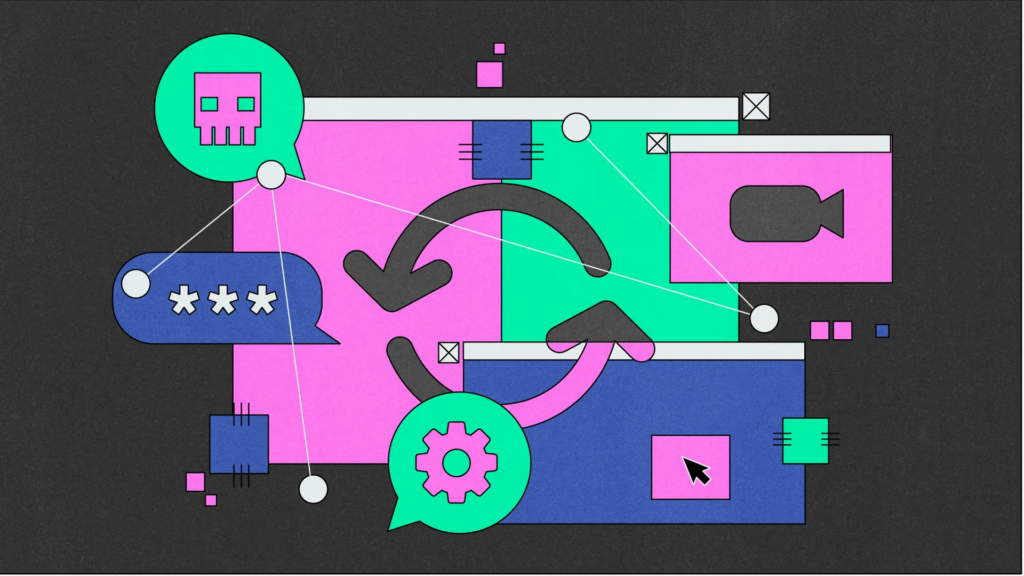Cybersecurity, also known as computer security or information technology security, refers to the practice of protecting computer systems, networks, and data from unauthorized access, use, disclosure, disruption, modification, or destruction. It involves the implementation of measures and techniques to safeguard digital information and ensure the confidentiality, integrity, and availability of data.
Cybersecurity aims to defend against various threats and vulnerabilities that can compromise the security of computer systems and networks. These threats can come in the form of malicious software (malware) such as viruses, worms, ransomware, or spyware, as well as hacking attempts, phishing attacks, social engineering, and other techniques employed by cybercriminals.
The field of cybersecurity encompasses a range of practices and technologies, including:
- Risk assessment and management: Identifying potential vulnerabilities and threats, evaluating their potential impact, and developing strategies to mitigate or minimize risks.
- Network security: Protecting computer networks from unauthorized access, ensuring secure communication, and implementing firewalls, intrusion detection systems, and other network security measures.
- Application security: Securing software and applications from vulnerabilities and ensuring that they are resistant to attacks.
- Data protection: Implementing encryption, access controls, and data backup strategies to protect sensitive information from unauthorized disclosure or modification.
- Incident response and recovery: Developing plans and procedures to respond to cybersecurity incidents promptly, mitigate their impact, and restore normal operations.
- Identity and access management: Managing user identities, authentication, and authorization processes to control access to systems and data, preventing unauthorized use.
- Security awareness and training: Educating users about potential risks, best practices, and security policies to promote a culture of cybersecurity within an organization.
Cybersecurity is a critical concern for individuals, businesses, governments, and organizations of all sizes, as the digital landscape becomes increasingly complex and interconnected. Effective cybersecurity measures help safeguard sensitive information, protect privacy, maintain business continuity, and ensure the trust and integrity of digital systems.

The Different Types of Cybersecurity
Cybersecurity can be categorized into various types or domains based on the areas of focus and the specific aspects they aim to protect. Here are some common types of cybersecurity:
- Network Security: Network security focuses on protecting computer networks and their infrastructure from unauthorized access, attacks, and disruptions. It involves implementing firewalls, intrusion detection and prevention systems (IDS/IPS), virtual private networks (VPNs), and network segmentation to secure network traffic and defend against malicious activities.
- Application Security: Application security focuses on securing software and applications from vulnerabilities and protecting them from attacks. This includes secure coding practices, regular software patching and updates, input validation, and implementing measures such as web application firewalls (WAFs) and penetration testing to identify and address application vulnerabilities.
- Cloud Security: Cloud security addresses the unique security challenges associated with cloud computing environments. It involves securing cloud-based data, applications, and infrastructure by implementing access controls, encryption, and monitoring mechanisms. Additionally, it focuses on ensuring the confidentiality, integrity, and availability of data stored and processed in the cloud.
- Data Security: Data security involves protecting sensitive data from unauthorized access, disclosure, and manipulation. It includes implementing encryption, access controls, data loss prevention (DLP) measures, and data backup strategies. Data security also encompasses techniques like anonymization, tokenization, and secure data sharing practices.
- Endpoint Security: Endpoint security focuses on securing individual devices (endpoints) such as desktops, laptops, smartphones, and other connected devices. It involves deploying antivirus software, host intrusion prevention systems (HIPS), endpoint detection and response (EDR) solutions, and enforcing policies for secure device usage.
- Identity and Access Management (IAM): IAM focuses on managing user identities, their authentication, and authorization to access systems and data. It includes practices such as strong password policies, multi-factor authentication (MFA), and privileged access management (PAM) to control and monitor user access rights.
- Threat Intelligence: Threat intelligence involves gathering, analyzing, and utilizing information about potential cyber threats and attackers. It helps organizations understand the threat landscape, anticipate attacks, and proactively implement security measures. Threat intelligence feeds into other cybersecurity domains to enhance their effectiveness.
- Disaster Recovery and Business Continuity: This type of cybersecurity focuses on planning and implementing measures to ensure the resilience of systems and the ability to recover from cyber incidents. It includes regular backups, creating incident response plans, and conducting exercises to test and improve incident response capabilities.
These are just a few examples of the types of cybersecurity practices and domains. In practice, these domains often overlap and complement each other to provide comprehensive protection against evolving cyber threats.
The Evolution of the Cyber Security Threat Landscape
The cyber security threat landscape has evolved significantly over time, reflecting advancements in technology, changing attack techniques, and the expanding digital ecosystem. Here is an overview of the key stages in the evolution of the cyber security threat landscape:
- Early Days: In the early days of computing, cyber threats were relatively limited. Malicious activities were primarily driven by individual hackers or hobbyist programmers seeking recognition or personal gain. The main concerns were viruses, worms, and basic forms of malware spread via physical media such as floppy disks.
- Rise of the Internet: As the internet became more widespread, cyber threats expanded exponentially. The late 1990s and early 2000s saw the emergence of widespread malware outbreaks such as the ILOVEYOU virus and the Code Red worm. These threats targeted vulnerabilities in popular software and exploited weaknesses in network security.
- Profit-Driven Attacks: The early 2000s marked a shift toward financially motivated cyber attacks. Criminals began targeting online financial transactions, stealing sensitive information for monetary gain. This period saw the rise of phishing attacks, banking trojans, and identity theft.
- Advanced Persistent Threats (APTs): APTs emerged as a significant threat in the mid-2000s. APTs are sophisticated, stealthy attacks typically carried out by nation-state actors or highly organized cybercriminal groups. They involve long-term, targeted campaigns aimed at espionage, intellectual property theft, or disruption of critical infrastructure.
- Ransomware and Extortion: Ransomware attacks gained prominence around 2012. This type of malware encrypts victims’ files and demands a ransom in exchange for the decryption key. Ransomware attacks became increasingly widespread, targeting individuals, businesses, and even governmental organizations.
- Internet of Things (IoT) Vulnerabilities: The proliferation of IoT devices introduced new security challenges. Insecurely designed and configured IoT devices have become attractive targets for hackers. Exploiting vulnerabilities in IoT devices can lead to network breaches, data theft, and even control over critical infrastructure systems.
- Supply Chain Attacks: In recent years, supply chain attacks have gained attention as a significant threat. Instead of directly targeting a victim organization, attackers compromise trusted suppliers or vendors to gain access to their customers. This allows them to distribute malicious software or exploit vulnerabilities across multiple organizations.
- Nation-State Cyber Warfare: Nation-states have increasingly leveraged cyber attacks as a tool for espionage, disruption, and influence. Examples include state-sponsored attacks targeting critical infrastructure, political campaigns, or sensitive government systems. These attacks often combine advanced techniques, zero-day vulnerabilities, and social engineering tactics.
- AI-Powered Attacks: As artificial intelligence (AI) and machine learning (ML) technologies advance, so do their applications in cyber attacks. Attackers can use AI to automate attacks, improve evasion techniques, and generate more convincing phishing emails or deepfake content.
- Cloud and Mobile Security Challenges: The widespread adoption of cloud computing and mobile devices has introduced new security challenges. Securing cloud environments, protecting mobile devices and apps, and managing the risks associated with remote work have become critical concerns.
The cyber security threat landscape continues to evolve rapidly, driven by technological advancements, increasing interconnectivity, and the creativity of malicious actors. To stay ahead, organizations and individuals need to continually adapt their security measures and remain vigilant against emerging threats.
The Need for a Consolidated Cyber Security Architecture
A consolidated cyber security architecture refers to the integration and coordination of various security components and measures within an organization into a cohesive framework. Here are some reasons why a consolidated cyber security architecture is essential:
- Comprehensive Protection: A consolidated architecture allows for a holistic approach to security by bringing together various security domains, such as network security, application security, and data security. By integrating these components, organizations can establish a unified defense strategy that provides comprehensive protection against a wide range of cyber threats.
- Streamlined Management: Managing multiple security solutions and disparate systems can be complex and time-consuming. A consolidated architecture simplifies security management by centralizing control and visibility. It enables organizations to monitor, configure, and update security measures more efficiently, reducing administrative overhead and improving overall operational effectiveness.
- Improved Detection and Response: Integrating security components enables better detection and response capabilities. By correlating information and events across different security layers, organizations can identify patterns, anomalies, and potential threats more effectively. This leads to quicker incident detection, faster response times, and more efficient remediation of security incidents.
- Enhanced Threat Intelligence: A consolidated architecture facilitates the sharing and analysis of threat intelligence across different security components. By centralizing threat intelligence feeds and utilizing advanced analytics, organizations can gain better insights into emerging threats and proactive defense mechanisms. This intelligence can be used to update security policies, tune security controls, and strengthen overall cyber resilience.
- Cost Efficiency: Implementing a consolidated cyber security architecture can lead to cost savings. By integrating and rationalizing security solutions, organizations can reduce duplication of efforts, eliminate redundant systems, and optimize resource allocation. This can result in reduced infrastructure and operational costs while improving the effectiveness of security investments.
- Regulatory Compliance: Many industries are subject to regulatory requirements for data protection and security. A consolidated architecture can help organizations align with these regulations more effectively. By integrating security controls and implementing consistent policies, organizations can streamline compliance efforts, ensure adherence to relevant standards, and simplify audit processes.
- Scalability and Flexibility: As organizations grow and adopt new technologies, a consolidated architecture provides scalability and flexibility. It allows for the seamless integration of new security solutions and the expansion of existing ones, ensuring that security measures keep pace with evolving threats and business needs.
- Collaboration and Information Sharing: A consolidated architecture promotes collaboration and information sharing across different teams within an organization. By breaking down silos and enabling cross-functional collaboration, organizations can enhance their security posture through knowledge exchange, joint incident response, and shared best practices.
In summary, a consolidated cyber security architecture brings together diverse security measures into a unified framework. It provides comprehensive protection, streamlines management, enhances threat detection and response, enables cost efficiency, ensures compliance, supports scalability, and facilitates collaboration. By adopting a consolidated approach, organizations can strengthen their overall security posture and effectively mitigate the evolving cyber threats they face.
Achieving Comprehensive Cybersecurity with Check Point
Check Point is a leading provider of cybersecurity solutions, offering a range of products and services to help organizations achieve comprehensive security. Here’s how Check Point can contribute to comprehensive cybersecurity:
- Network Security: Check Point offers a range of network security solutions, including next-generation firewalls (NGFW), intrusion prevention systems (IPS), and secure web gateways (SWG). These solutions provide robust network protection, deep packet inspection, threat prevention, and traffic control capabilities to defend against various network-based attacks.
- Endpoint Security: Check Point’s endpoint security solutions protect devices such as desktops, laptops, and mobile devices from malware, ransomware, and other threats. Their endpoint protection platforms (EPP) provide features like anti-malware, data loss prevention (DLP), and endpoint detection and response (EDR), ensuring comprehensive endpoint security.
- Cloud Security: Check Point offers cloud security solutions to protect cloud environments and workloads. Their CloudGuard suite includes tools for cloud network security, workload protection, container security, and serverless security. With these solutions, organizations can secure their assets and data in public, private, and hybrid cloud environments.
- Threat Intelligence: Check Point’s threat intelligence services provide real-time information on emerging threats, vulnerabilities, and global attack trends. This data helps organizations stay informed and proactively defend against evolving cyber threats. Check Point’s research team actively monitors and analyzes cyber threats worldwide, ensuring their solutions are up to date and effective.
- Security Management: Check Point’s security management solutions provide centralized management and visibility across various security components. This allows organizations to streamline security operations, manage policies, monitor security events, and conduct forensic investigations from a single console. This centralized approach simplifies security management and enhances efficiency.
- Mobile Security: Check Point’s mobile security solutions protect mobile devices and apps from threats such as malware, phishing, and data leakage. These solutions provide secure mobile access, containerization, and threat prevention to safeguard mobile endpoints and maintain data privacy.
- Zero Trust Security: Check Point embraces the zero trust security model, which ensures that all users and devices, both inside and outside the network perimeter, are verified and authenticated before accessing resources. Check Point’s solutions help organizations implement zero trust principles by enforcing strict access controls, strong authentication, and continuous monitoring.
- Incident Response: Check Point’s incident response services assist organizations in responding to and recovering from security incidents effectively. Their experts provide incident response planning, forensic analysis, containment, and recovery assistance, helping organizations minimize the impact of cyber attacks and restore normal operations swiftly.
By leveraging Check Point’s comprehensive suite of cybersecurity solutions, organizations can strengthen their security posture across networks, endpoints, cloud environments, and mobile devices. With robust threat intelligence, centralized management, and incident response support, Check Point enables organizations to achieve comprehensive cybersecurity and effectively protect against a wide range of cyber threats.
Read More : VR Application Development: A Guide for Enterprises





